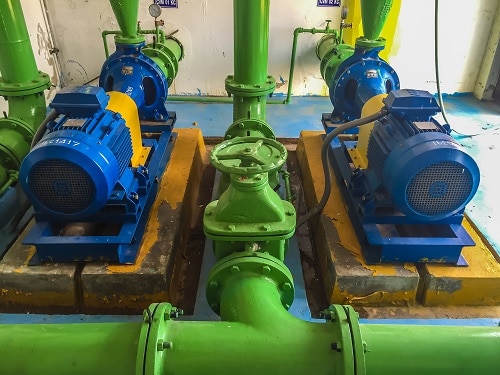In part two of Centrifugal Pump Operation, we are going to continue where Part 1 left off. We gave some general information and covered multiple centrifugal pump operation in series. We are going to cover parallel operation and beyond.
Parallel Centrifugal Pump Operation

When two centrifugal pumps are operating in parallel, they are hooked to a common discharge. Unlike pumps in series, they have the same suction and discharge characteristics. Each pump has the same head, but the flow rate is nearly equal to the sum of the pumps being used. However, there is a caveat about flow rate.
Because friction is increased, two pumps that are being used for parallel operation can’t deliver the sum of their projected flow rates when working alone. The flow rates are subject to what is called the “system resistance curve.” Basically, the more resistance, the less total flow. Under less than ideal conditions, parallel operation can reach the point of diminishing returns.
One centrifugal pump operating alone will produce a higher flow rate than it will when working in parallel with one or more other pumps. If a pump is designed to be run parallel, make sure it can handle the specifications for solo operation.
Predicting Changes in Centrifugal Pump Performance
There are two factors that can cause change in performance: speed variation and impeller diameter variation.
Speed Variation
The following rules apply to speed variation. Speed has a direct influence on flow rate. The pump head increases or decreases by the square of the speed. Power absorbed increases or decreases by the cube of the speed.
Impeller Diameter Variation
The head and flow rate vary directly with the diameter of the impeller. A larger diameter increases head and flow rate. A smaller diameter decreases head and flow rate.
Avoid Cavitation
The impeller vane can be damaged by operating a centrifugal pump at too high a speed, insufficient net positive suction head available (NPSHA) or excessive suction lift. This is called cavitation. Cavitation can reduce performance and increase noise.
Call Pump Solutions Australasia Today
To learn more, call us today: 1300 793 418.
